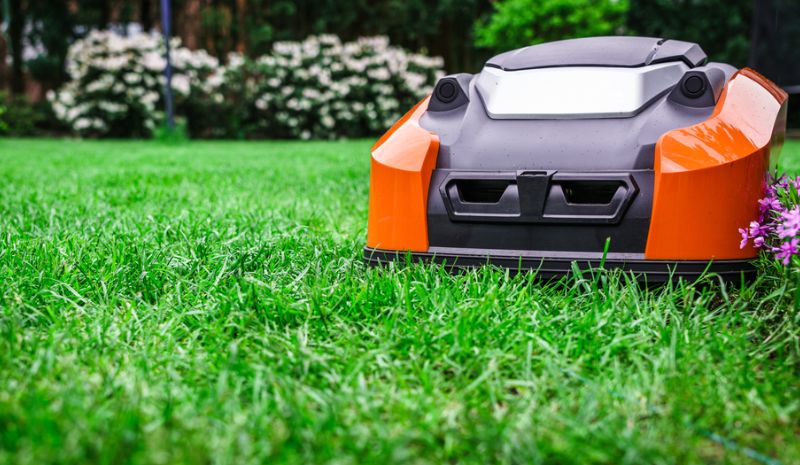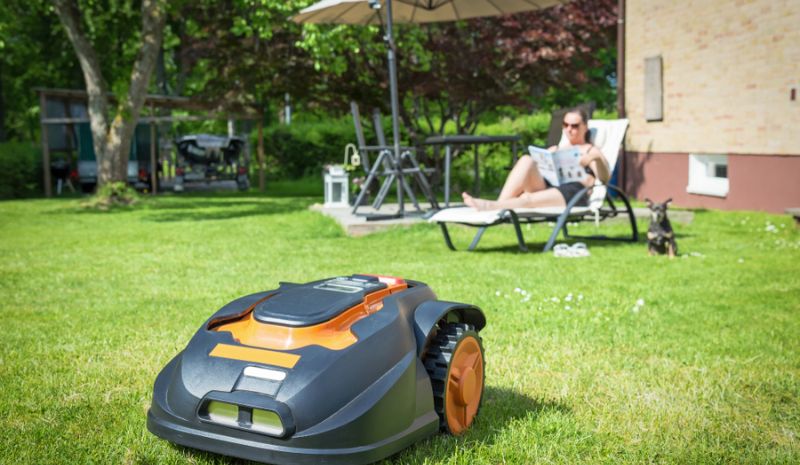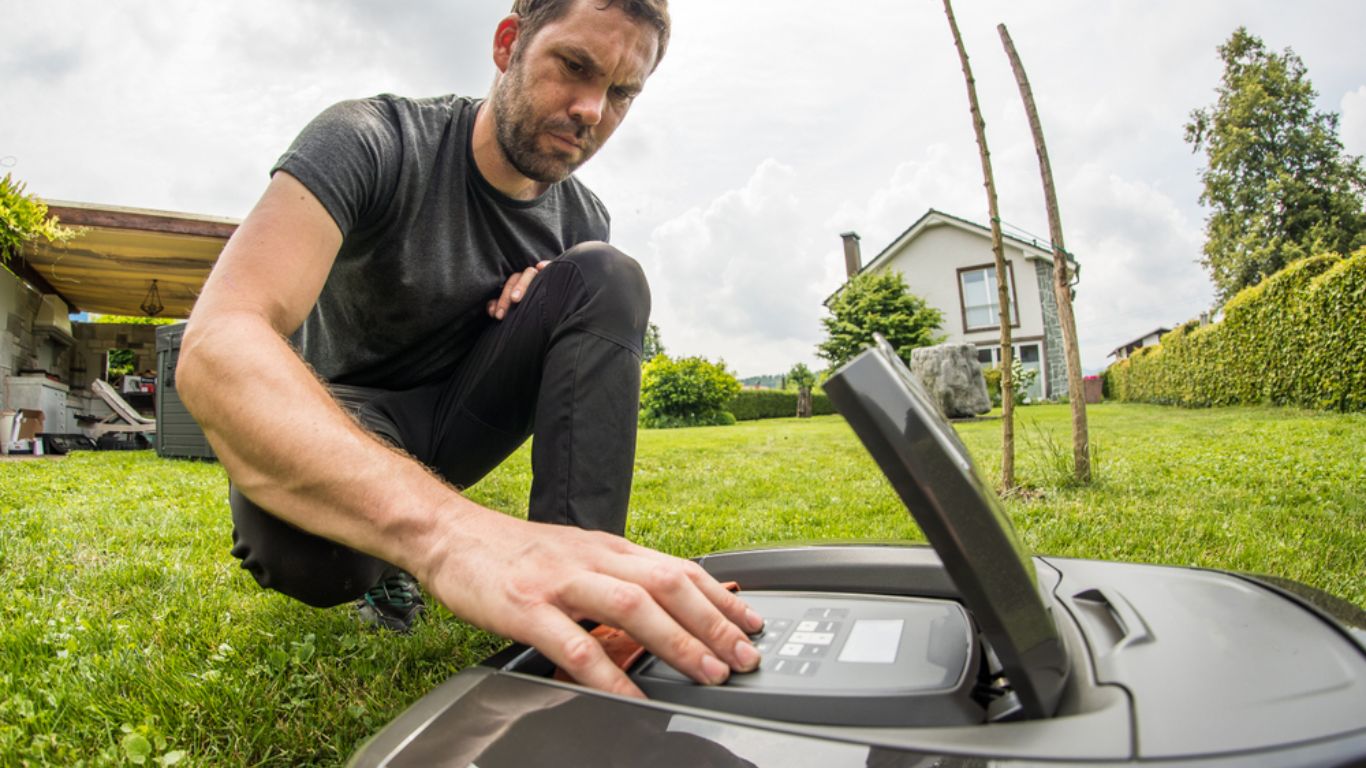Wondering how to choose a robot lawn mower? You’re not alone. These autonomous helpers have revolutionized yard maintenance, promising to reclaim your weekends and keep your lawn pristine with minimal effort. But with countless options flooding the market, selecting the right mechanical gardener can feel overwhelming. At Best Lawn Mower For Hills, we’ve crafted this comprehensive guide to simplify your decision-making process.
Whether you’re tending to a compact urban patch or a sprawling suburban expanse, we’ll navigate you through the crucial factors to consider. From cutting performance to smart features, we’ll ensure you find a robotic companion that’s perfectly suited to your lawn’s unique needs. Let’s dive into the world of automated mowing and transform the way you care for your green space.
Understanding Robot Lawn Mowers
Robot lawn mowers are the silent sentinels of modern landscaping. These compact, battery-powered devices roam your yard with precision, keeping grass at the perfect height without human intervention. Unlike their noisy, gas-guzzling predecessors, these eco-friendly mowers operate on a schedule you set, navigating around obstacles and returning to their charging stations when low on power.
But how do you choose a robot lawn mower that’s right for your needs? It starts with understanding their core functions. These automated landscapers use sensors and boundary wires to map out your lawn, ensuring every inch is covered. They excel at maintaining consistent grass length through frequent, light trims rather than infrequent, heavy cuts. This approach not only keeps your lawn looking immaculate but also promotes healthier growth and natural fertilization through fine grass clippings.
Key Factors to Consider When Choosing a Robot Lawn Mower
Lawn Characteristics
When learning how to choose a robot lawn mower, start by analyzing your lawn’s unique features. The dimensions of your yard dictate the mower’s required range and battery capacity. A compact urban plot might only need a basic model while sprawling estates demand more robust machines with extended runtimes.
Terrain complexity is equally crucial. Uneven ground, steep inclines, and numerous obstacles require advanced navigation systems and powerful motors. At Best Lawn Mower For Hills, we emphasize the importance of slope-handling capabilities. Some high-end models can manage gradients up to 35 degrees, ensuring consistent cuts on hilly landscapes.
Consider your lawn’s layout. Multiple zones or separated areas may necessitate a mower with multi-zone functionality or the ability to navigate narrow passages. Additionally, the presence of flowerbeds, trees, or water features will influence your choice, as you’ll need a mower adept at avoiding these obstacles without manual intervention.

Cutting Performance
The heart of any robot lawn mower lies in its cutting mechanism. When considering how to choose a robot lawn mower, pay close attention to the cutting width and height adjustability. A wider cutting path means faster mowing, but it may sacrifice maneuverability in tight spaces. Look for models offering a range of cutting heights to accommodate different grass types and seasonal changes.
Blade quality is paramount. Some advanced mowers feature floating blades that adapt to uneven terrain, ensuring a uniform cut across your entire lawn. Others boast multiple blades for enhanced efficiency. Consider the mower’s mulching capabilities as well. Fine mulching not only promotes a healthier lawn but also eliminates the need for grass collection.
Edge-cutting prowess is another critical factor. While many robotic mowers struggle with lawn edges, leaving them untrimmed, newer models incorporate special edge-cutting modes or disc-shaped designs that can mow right up to the lawn’s border. This feature can significantly reduce the need for manual touch-ups with a string trimmer.
Battery Life and Charging
When pondering how to choose a robot lawn mower, battery performance should be a top priority. The mower’s runtime directly impacts its efficiency and the frequency of recharges needed. High-capacity lithium-ion batteries are the gold standard, offering extended mowing sessions between charges.
Consider the charging system’s intelligence. Advanced models feature automated docking, where the mower returns to its charging station when power runs low. Some even resume mowing exactly where they left off once recharged. This seamless operation ensures your lawn receives consistent attention without your intervention.
Charging time is equally important. Rapid-charge capabilities can be a game-changer, especially for larger lawns that require multiple mowing sessions. Some mowers offer quick-charge options, providing enough power for a short mowing burst in just 15-20 minutes.
We recommend assessing the balance between battery life and lawn size. A mower with a runtime that comfortably covers your entire lawn in one go is ideal, but for expansive areas, consider models that can manage multiple mowing sessions efficiently.

Smart Features and Controls
In the quest for choossing a robot lawn mower, smart technology plays an increasingly vital role. Modern robotic mowers offer an array of intelligent features that enhance performance and user convenience. GPS navigation stands out as a game-changer, enabling precise lawn mapping and efficient mowing patterns. This technology allows the mower to create virtual boundaries, eliminating the need for physical perimeter wires in some models.
Smartphone integration has become a standard feature in high-end units. Through dedicated apps, you can control your mower remotely, adjust schedules, and receive real-time updates on mowing progress. Some advanced systems even incorporate AI learning, adapting mowing patterns based on lawn growth rates and weather conditions.
Weather-adaptive functionality is another smart feature to consider. Mowers equipped with rain sensors can automatically postpone mowing sessions during wet conditions, protecting both the lawn and the machine. Some models also adjust their mowing frequency based on grass growth rates, which can vary with seasonal changes.
Look for mowers with intuitive controls, whether on the unit itself or via smartphone apps. The ability to easily set schedules, define no-mow zones, and customize cutting heights can significantly enhance your lawn care experience.

Maintenance and Longevity
When choosing a robot lawn mower, factor in long-term care. Regular blade sharpening or replacement is key, with some models offering self-sharpening features. Cleaning is vital; remove debris to maintain cutting efficiency. Look for mowers with easy-to-follow maintenance procedures.
Software updates are crucial. Opt for brands providing regular firmware improvements. Some high-end models offer remote updates, keeping your mower’s performance optimized.
Consider the availability of spare parts and ease of repairs. Brands with strong customer support and readily available components can reduce downtime and maintenance costs. These factors contribute significantly to your mower’s lifespan and overall value.
Cost Considerations
Initial Investment
Pricing is a crucial factor. Entry-level models start at around $600, while high-end units can cost more than $3,000. Consider your lawn’s size and complexity when budgeting. Larger yards or those with intricate layouts may require more advanced, pricier models.
Long-term Savings
Despite the upfront cost, robotic mowers can offer significant savings over time. They eliminate the need for fuel, reduce water usage through precise cutting, and minimize fertilizer expenses due to natural mulching. Calculate potential long-term benefits when assessing the initial price tag.
Operating Costs
Factor in electricity consumption, which is typically minimal. Most robot mowers use less energy than traditional electric mowers. Blade replacements and occasional repairs are the main ongoing expenses. Some manufacturers offer service plans, which can provide peace of mind and predictable maintenance costs.
Value-Added Features
Assess the cost-benefit ratio of advanced features. GPS navigation, smart home integration, and multi-zone capabilities might justify a higher price for complex lawns. However, simpler yards may not require these premium features, allowing for more budget-friendly options without sacrificing essential functionality.

Environmental Impact of Robot LawnMowers
Reduced Emissions
Unlike gas-powered mowers, robotic models produce zero direct emissions. This shift significantly reduces your carbon footprint, contributing to cleaner air and a healthier environment.
Energy Efficiency
Most robotic mowers operate on rechargeable batteries, consuming minimal electricity. Their energy use is often lower than that of traditional electric mowers, further decreasing environmental impact. Look for models with energy-saving modes or solar-powered charging stations for maximum efficiency.
Noise Pollution Reduction
Robotic mowers operate at much lower decibel levels compared to conventional mowers. This reduced noise pollution benefits both your household and your neighbors, allowing for more flexible mowing schedules without disturbance.

Lawn Health and Biodiversity
The frequent, precise cutting pattern of robot mowers promotes healthier grass growth. Their mulching function naturally fertilizes the lawn, reducing the need for chemical treatments. Some models even adjust cutting patterns to encourage biodiversity, supporting local ecosystems.
Water Conservation
By maintaining an optimal grass length, robotic mowers help reduce water evaporation from your lawn. This can lead to decreased water usage, especially in drier climates. When selecting a model, consider those with rain sensors that adjust mowing schedules based on weather conditions, further optimizing water conservation efforts.
User Experience and Reviews of Lawn Mower Robots
Real-world feedback often reveals insights that specifications alone can’t convey. When sifting through reviews, pay attention to comments about ease of setup, daily operation, and long-term reliability.
Many users praise the time-saving aspect of robotic mowers, highlighting how these devices free up weekends for leisure activities. However, some note a learning curve in optimizing mowing schedules and boundary settings. Pay close attention to remarks about navigation capabilities, especially if your lawn has unique features or obstacles.
Battery life and charging efficiency are frequent topics in user reviews. Look for feedback on whether the mower can complete a full cycle on a single charge, particularly for larger lawns. Users often comment on noise levels, too, with many appreciating the quieter operation compared to traditional mowers.
Maintenance requirements and durability are key factors mentioned in long-term reviews. Users frequently discuss the frequency of blade replacements and the overall sturdiness of the machine. Pay heed to comments about customer support quality, as this can be crucial for troubleshooting and repairs.

Top Brands and Models
When exploring how to choose a robot lawn mower, two groundbreaking models stand out: the Navimow i110 and the Yuca 1500. These newcomers are redefining autonomous lawn care with their cutting-edge features.
Navimow i110
Segway’s Navimow i110 revolutionizes boundary setting in robotic mowing. It employs EFLS (Exact Fusion Locating System) technology, eliminating the need for perimeter wires. This GPS-RTK-based system offers centimeter-level positioning accuracy, ensuring precise navigation and virtual boundaries. Designed for lawns up to 1000 square meters, the i110 combines innovation with practicality.
Yuca 1500
The Yuca 1500 brings impressive capabilities to medium and large lawns. With a coverage capacity of 1500 square meters, it stands out for its advanced obstacle detection system. Its ability to handle slopes up to 30 degrees addresses a common challenge in robotic mowing, making it ideal for properties with varied terrain.
Comparing Features
Both models offer unique strengths. The Navimow i110’s wire-free operation simplifies installation and allows for flexible lawn layouts. The Yuca 1500, with its larger coverage area and superior slope handling, caters to those with more expansive or hilly lawns. Consider your specific lawn characteristics when choosing between these innovative options.
Please visit our detailed review to see more about that innovative product BestLawnMowerForHills.org
Make Your Decision When Choosing a Robot Lawn Mower
Assessing Your Specific Needs
When finalizing how to choose a robot lawn mower, start by evaluating your unique requirements. Consider your lawn’s size, shape, and topography. A small, flat yard might need only a basic model, while a large, hilly landscape calls for a more robust machine with advanced slope-handling capabilities.
Balancing Features with Budget
Weigh the features you need against your budget constraints. While high-end models offer cutting-edge technology like GPS navigation and smartphone control, mid-range options can provide excellent performance for most lawns. Don’t overspend on features you won’t use, but also avoid skimping on essential capabilities for your specific situation.

Future-Proofing Your Purchase
Think about potential changes to your lawn or lifestyle. If you’re planning landscape modifications or might move to a different property, opt for a versatile mower that can adapt to various conditions. Look for models with software update capabilities to ensure your investment stays current with technological advancements.
Warranty and Support Considerations
Examine the warranty terms and available customer support. A comprehensive warranty can protect your investment, while responsive customer service can be invaluable for troubleshooting and maintenance. Research the manufacturer’s reputation for after-sales support and the availability of spare parts in your region.
Conclusion
Selecting the perfect robotic mower doesn’t have to be a daunting task. By carefully considering your lawn’s unique characteristics, desired features, and budget constraints, you can find a model that transforms your lawn care routine. Remember, the best choice aligns with your specific needs, whether it’s tackling steep inclines or navigating complex layouts. At Best Lawn Mower For Hills, we encourage you to weigh the long-term benefits against initial costs, factoring in time saved and environmental impact. As autonomous mowing technology continues to evolve, your investment in a robotic mower today sets the stage for effortless, pristine lawns tomorrow. Embrace the future of lawn care and reclaim your weekends with a well-chosen robotic companion.
FAQs
Can robot lawnmowers handle wet grass?
Most robotic mowers can operate in light rain and on damp grass. However, their performance may decrease on very wet lawns. Many models come equipped with rain sensors, automatically returning to their charging stations during heavy downpours. When choosing a robot lawn mower, look for weather-adaptive features if you live in a rainy climate.
How do robot mowers affect lawn health?
Robotic mowers typically enhance lawn health. Their frequent cutting promotes denser grass growth, and their mulching function naturally fertilizes the lawn. By maintaining a consistent grass height, these mowers reduce stress on the turf and minimize weed growth. Consider models with adjustable cutting heights to optimize your lawn’s health throughout different seasons.
Are robot lawnmowers safe for pets and children?
Safety is a top priority in robotic mower design. Most models feature sensors that detect obstacles, including pets and children, causing the mower to change direction or stop. Look for mowers with lift sensors that immediately stop the blades if the unit is tilted or lifted. Some advanced models even have perimeter sensors creating a safety zone around the mower.


